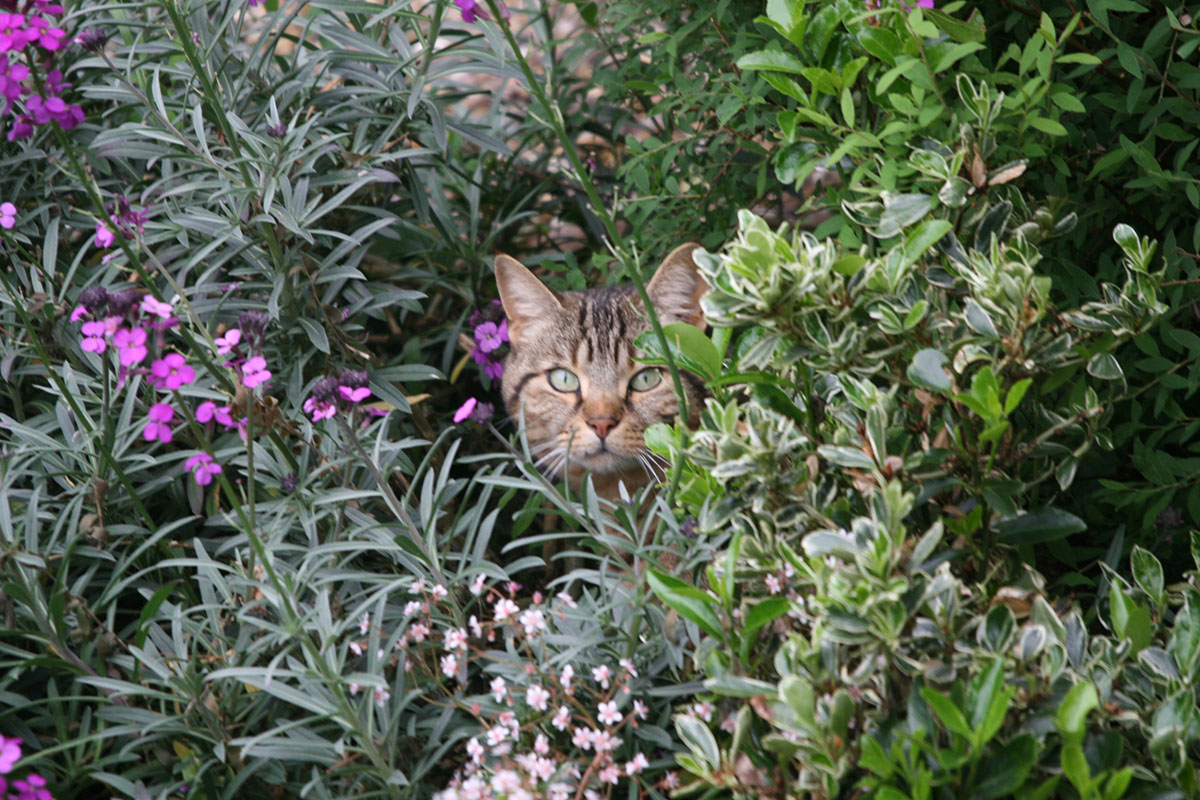Is Your Neighbour Planning to Steal your Cat?

What Would you do if you Discovered that your Neighbour was about to Steal your Cat?
Would you:
- March round to their home and challenge them?
- Lock your cat indoors?
- Call the police?
or would you simply ignore the risk in the belief that hardly any cats are ever stolen?

No one really knows for certain just how many cats are stolen each year but the figure is likely to be in the thousands. The lack of information on cat theft is primarily due to the fact that unlike missing dogs, the local authorities do not provide a stray cat service. In addition, police forces are reluctant to record missing cats as crimes and it is extremely rare for anyone to be prosecuted for stealing a cat.
So Does this Mean That Hardly any Cats are Stolen?
No! It doesn’t and we also believe that cat theft is a much bigger problem than most people realise, with approximately 25 percent of all missing cats being stolen. If the percentage surprises you then you will be even more shocked to discover that the person who is most likely to steal your cat will be someone you already know and even worse, they will be living very close to your home. We suspect that in just about every neighbourhood in Britain there is someone, who is at this very moment, coveting their neighbour’s cat.
We believe that the biggest category of cat thief is ‘your neighbour’!
Here is a typical example of what we encounter. In November 2014 we took on a new client in Walsall, West Midlands. The owner asked for our help in recovering her cat Gypsy, who had been missing for several days. Despite distributing numerous flyers and posters there had not been a single sighting of Gypsy, which was unusual because she lived in a built-up area. It didn’t take us long to establish that Gypsy had been stolen, or to identify the suspects, who until recently had been living only five houses away from our client. Within a few days we had located the suspects, devised a ‘Recovery Plan’ and successfully retrieved Gypsy from the thieves - without them even knowing what we had done.
So why would your neighbour steal your cat?
We have completed numerous investigations into missing cats and have identified three different categories of neighbourhood cat theft:
- Destruction
- Relocation
- Seduction
Cat Destruction
This is where a person, for a number of twisted reasons kills a neighbour’s cat, by poisoning, shooting or deliberately locking it in an outbuilding. These cat thieves are often fanatical bird lovers, obsessive gardeners or just very mean spirited people. We have dealt with too many cat killers and no doubt will have to deal with many more.
Cat Relocation
Relocation offences are less common but still account for a high number of missing cats. This is where a neighbour takes a dislike to a particular cat, traps or snatches the cat and then transports him to a different location, dumping him miles from home. We have dealt with several cat relocation offences and usually discover that the cat in question had a reputation for being aggressive, consequently another cat owner has taken drastic action in order to protect their cat from further injury.
Cat Seduction
The last category is what we refer to as ‘cat seduction’ and it accounts for the vast majority of neighbourhood cat thefts. To fully understand the offence of cat seduction we need to take a closer look at how our feline companions often unwittingly contribute to their own demise. 
In 2013 we set out to obtain a better understanding of cat behaviour. In particular, we wanted to establish the size of cat territories, when cats were active and where they went. So we launched a small cat-tracking project in our local village.
We started with just three cats and attempted (technology and weather permitting) to track their movements around the village. Unfortunately, two of our feline volunteers rarely left their homes and the third spent most of her time sitting on a shed roof! Our feline friends were simply not being very cooperative and our progress was frustratingly slow. We realised, that if our project was to be successful, then we needed a few more volunteers.
Sometimes in life, events can fall into place so neatly that you are left with the feeling that things were always meant to be - serendipity. Out of the blue we received a call from the editor of a local magazine called The Guildford who was keen to write an article about The Pet Detectives. We agreed to be interviewed on the condition that the feature would include a request for more feline volunteers. In no time at all the article was written and published and we waited with bated breath for a surge in new volunteers. However, the very first call we received was not from a volunteer but from the assistant director of the BBC Horizon documentary team. He had read the article about our company and had a proposal to put to us. Little did we realise that this phone call would lead to the biggest cat-tracking project ever completed in Britain and at its peak involved over 70 cats. What had started out as a small cat-tracking project in a quaint Surrey village would become a major scientific study, destined to reach millions of cat owners.
The BBC Horizon team were keen to keep a scientific theme to the programme so they invited a couple of cat behavioral experts to head up the project and also recommended that our GPS tracking devices should be replaced with high-tech radio tracking collars, supplied and monitored by the Royal Veterinary College. We agreed of course because for us it was a fantastic opportunity to work with some very talented people and to increase our knowledge on cat behaviour, which of course would assist us in the recovery of missing cats.
Over the next six weeks we learnt a great deal about cat behaviour but the most amazing discovery of all was that many of the cats involved in the project had adopted second homes. Some were in and out of each other’s houses on such a regular basis that it was impossible to establish which cat lived where. And they weren’t just sneaking in to steal food either. Their regular intrusions included scent marking, fighting, fooling around and even grabbing a few hours sleep in an upstairs bedroom! This behaviour had never been mapped on such a large scale before and for us it answered a very important question, one that had been tormenting us for years.
Where had all the missing cats gone?
The answer was that many had simply slipped off into the night and moved into a neighbouring property. This was an incredible discovery and one which presented us with an even more important question.
Why were so many cats abandoning their homes?
To find the answer to this question we switched our attention away from the cats and focused on the behaviour of the local residents. Most of the people we interviewed about their feline visitors were cat lovers and stated that initially, they were a bit apprehensive about their interlopers but after several months of visits were far more receptive and welcoming. Some said that they would occasionally put down food; others even admitted to buying a cat bowl and had worked out what food their visitor preferred. This of course led to an increase in the number and duration of visits and the occasional sleepover. It wasn’t long before their visitor was considered to be part of the family and no longer seen as an intruder. A common theme we observed amongst our interviewees was their use of the word ‘stray’ and in every case the intruder cat would continue to be referred to as a ‘stray’ right up until the time at which it was given a name. This is when the homeowner had established a strong emotional bond with the intruder cat and started to assume ownership. The seduction was complete it was now only a matter of time before the cat would abandon her home.
So who decides whether a cat is a stray or not?

Several of our interviewees admitted that when the cat tracking project started in the village they were quite surprised that their particular intruder arrived at their homes sporting a tracking collar.
Whilst most claimed that they always knew that someone owned their intruder, we could tell a few were very disappointed to discover that it definitely was the case.
So can the actions of these cat lovers be classed as dishonest and, most importantly, are they actually stealing the cats that they have seduced into their homes? After all, the intruder cats are being given a good home, with food, warmth and shelter and are free to come and go as they please. Surely, it is the cat’s fault for being so fickle?
Our definition of ‘cat seduction’ is the unlawful appropriation of a cat against the owner’s will, usually to hold the cat unlawfully.
Section 2 of the Theft Act 1968 makes it quite clear that a person’s appropriation of property - a cat is property - is not dishonest if they had a belief that the owner cannot be discovered by taking reasonable steps.
So what do you think, are the actions of the people who adopt intruder cats honest or not? We would like to know your opinion and you can leave a comment on this post below or contact us via our website.
We believe that it is all about the intent. If a person genuinely believes that, based upon the poor condition of a cat, it has been abandoned and therefore decides to provide it with a new home, then good for them for doing the right thing. But if a person actively encourages a healthy, well-fed cat to stay in their home and does nothing to try and find the cat’s owner, then they cannot possibly rely upon the defence detailed in section 6 above.
What can be done to prevent your neighbour from seducing your loved one into abandoning her home?
Cat seduction is an act of attrition and is usually committed over a period of months or even years. However, your cat will exhibit subtle changes in his or her behaviour that may indicate that he or she is about to leave home. We believe that the following advice will help to prevent you from becoming a victim of neighbourhood cat seduction:
- Discover where your cat goes when she leaves your home
- If you suspect a neighbour is feeding your cat then request they stop
- Monitor your cat’s diet, odd eating habbits is often a sign that he is being fed elsewhere
- If you suspect your cat is visiting a neighbour, then make sure that she wears a collar
- Watch out for changes in your cat’s routine especially if he is not returning home
- Obtain a good collection of photographs of your cat recording unique markings.
- Make sure your cat is micro-chipped.
- Obtain a DNA sample from your cat
Finally, if you suspect that someone is trying to seduce your cat into abandoning his or her home or your cat has already been seduced, then give us a call. We have a vast amount of knowledge on ownership disputes and cat theft and all calls to our office are FREE with absolutely no obligation.
Colin Butcher
The Pet Detective

